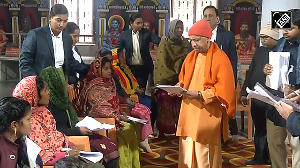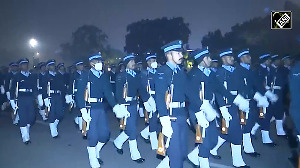Dr Sangeeta N Bhatia, director, Laboratory for Multiscale Regenerative Technologies at the Massachusetts Institute of Technology, has been chosen to the newest class of the prestigious Howard Hughes Medical Institute investigators.
Dr Bhatia, also a professor of electrical engineering and computer science and of health sciences and technology at MIT and a biomedical engineer in the department of medicine at Brigham and Women's Hospital, is one of the 56 of the nation's most creative biomedical scientists selected recently to be given the opportunity to tackle their most ambitious and risky research plans, according to the HHMI. The Institute is committing more than $600 million over their first term of appointment.
 |
"These 56 scientists will bring new and innovative ways of thinking about biology to the HHMI community," Thomas R Cech, HHMI president, said. "They are poised to advance scientific knowledge dramatically in the coming years, and we are committed to providing them with the freedom and flexibility to do so."
The HHMI chose the 56 scientists 42 men and 14 women representing 31 institutions from among 1,070 applications submitted in a nationwide competition announced last year. Researchers with four to 10 years of experience as faculty members at more than 200 institutions were eligible to apply.
In the past two decades, the HHMI, a nonprofit medical research organisation that ranks as one of the nation's largest philanthropies, has made investments of more than $8.3 billion for the support, training, and education of the nation's most creative and promising scientists.
Dr Bhatia did her BS from Brown University, MS in mechanical engineering from MIT, MD from the Harvard Medical School and PhD in medical engineering from MIT and the Harvard-MIT Division of Health Sciences and Technology.
As a biomedical engineering student at Brown, she often walked past the medical school's Artificial Organs Laboratory. One day in 1989 she knocked on the door and asked if she could work there. 'I was interested in the idea that you could engineer organs,' said Dr Bhatia, who would later become a highly regarded innovator in tissue engineering, biomedical microdevices, and nanobiotechnology. 'I told them, "I'm small, I won't take up much room!"'
The lab's director invited her to work there for the summer.
After graduating from Brown, she enrolled in the Harvard-MIT Health Sciences Technology graduate programme, and soon became intrigued by the considerable hurdles facing scientists trying to grow liver cells in the lab. At the same time, she was taking courses at the Harvard Medical School. "I fell in love with the human body," she remembers. "I decided I wanted to finish the medical degree as well."
For years, labs have tried to grow liver cells. Dr Bhatia painstakingly figured out that one reason the liver cells did not thrive was because they were not in the right microenvironment. With that new knowledge in hand, she and her colleagues set about designing novel ways to provide liver cells in the laboratory with the critical factors they need to survive.
To ultimately generate a complete implantable liver, Dr Bhatia and her colleagues have designed tools and methods used in making semiconductors colonies of human liver cells that model aspects of the full-size human organ. Another major effort in Dr Bhatia's lab is the development of nanoparticles designed to diagnose and treat cancer. In the longer term, she envisions novel cancer treatments. Some of her recent research includes creating 'nanorods' made of gold that can be targeted to tumors and heated by infrared light to kill cancer cells.
Her ideas seem endless. "They come to me at funny times and in unpredictable places," she says. But she adds that she spends a lot of time being 'a regular person' with her two little girls, a book group, yoga, and lots of support from her scientist husband and parents. She is also involved in mentoring and efforts to bring more women into the engineering field. Among her awards is the MIT TR100 Young Innovators Award. She has co-authored the first undergraduate textbook on tissue engineering and holds 12 issued or pending patents.
The investigator programme is the HHMI's flagship programme. It employs more than 300 of the nation's most innovative scientists, who lead Hughes laboratories at 64 institutions; 124 of these scientists are members of the National Academy of Sciences and 12 have won the Nobel Prize. HHMI investigators have the freedom to explore and, if necessary, to change direction in their research. They also have the support to follow their ideas through to fruition even if that process takes years.






 © 2025 Rediff.com -
© 2025 Rediff.com -